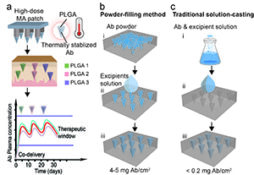 Abstract: Topology optimization has emerged as a promising and powerful approach to design engineered materials and components. Initially restricted to two-phase, solid-void design problems in linear elasticity, topology optimization approaches for multi-physics and multi-material problems have emerged. These problems are often dominated by interface phenomena, such as contact and delamination at material interfaces and boundary layer effects at fluid-solid interfaces. Accurately modeling these phenomena and, at the same time, allowing for topological changes in the optimization process pose interesting challenges on the formulation of the design optimization problem, the physics model, and the discretization method.
Abstract: Topology optimization has emerged as a promising and powerful approach to design engineered materials and components. Initially restricted to two-phase, solid-void design problems in linear elasticity, topology optimization approaches for multi-physics and multi-material problems have emerged. These problems are often dominated by interface phenomena, such as contact and delamination at material interfaces and boundary layer effects at fluid-solid interfaces. Accurately modeling these phenomena and, at the same time, allowing for topological changes in the optimization process pose interesting challenges on the formulation of the design optimization problem, the physics model, and the discretization method.
This talk will provide an overview of topology optimization approaches for problems, reviewing both density and level set topology optimization methods. This overview will show that level set methods combined with immersed finite element approaches provide a promising framework, especially for coupled multi-physics and multi-material topology optimization problems. The accuracy, robustness, and accuracy of the finite element analysis play a crucial role for such problems. This talk will present an isogeometric formulation of the eXtended Finite Element Method where the level set and state variables fields are discretized on adaptively refined meshes, using truncated hierarchical B-splines. Using approximate Lagrange extraction, this formulation can be integrated in standard finite element solvers.
The characteristics of this XFEM analysis and level set topology optimization framework will be illustrated with 2D and 3D problems in solid and fluid mechanics, including elastic, flow, and conjugate heat transfer problems.
Biographical Sketch: Dr. Maute is the Palmer Endowed Chair and a professor in the Ann and H.J. Smead Aerospace Engineering Sciences Department at the University of Colorado Boulder. Dr. Maute received a Bs/Ms. in Aerospace Engineering in 1992 and Ph.D. in Civil Engineering in 1998, both from the University of Stuttgart, Germany. After working as a postdoctoral research associate at the Center for Aerospace Structures, he started his faculty position at CUB in 2000. His research is concerned with computational mechanics and design optimization methods. He focuses on fundamental problems in solid and fluid mechanics and heat transfer with applications to aerospace, civil, mechanical engineering problems. For the past 30 years, Dr. Maute has worked on topology and shape optimization methods for a broad range of problems focusing on coupled multi-physics and multi-scale problems, such as fluid-structure interaction and chemo-mechanically coupling. Dr. Maute has published his work in over 200 journal articles, book chapters, and conference proceedings.








